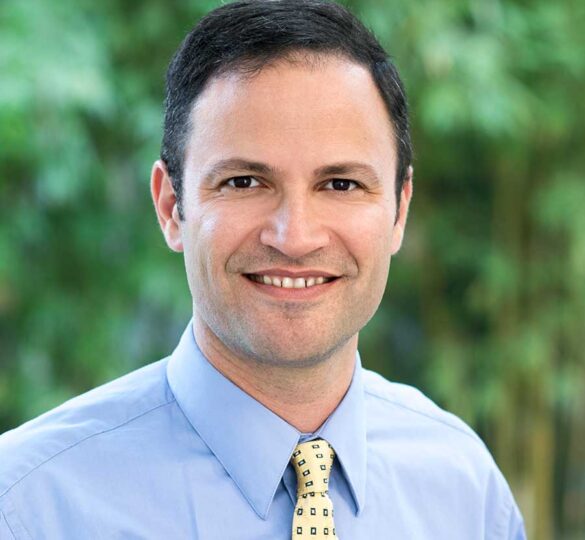Is There a Safe Stem-cell Treatment for Glaucoma in 2023?

Jeffrey Goldberg, MD, PhD reviews recent research progress and explains the potential risks.
Is there a safe stem-cell treatment for glaucoma in 2023? This is one of the most pressing and most common questions being asked by patients, especially by patients who have lost significant vision to glaucoma. The loss of vision in glaucoma is associated with the degeneration of retinal ganglion cells (called “RGCs”), and the premise—and promise—of replacing RGCs with stem cells to restore vision is compelling.
Are we making progress towards stem cell treatments?
We’ve made a lot of progress in the laboratory towards cell therapy for glaucoma. Our lab and others’ labs have largely figured out how to turn human stem cells into human RGCs in the lab dish, and we can characterize their function and anatomy with ultrafine molecular detail. Furthermore, human RGC transplants into preclinical model animals with glaucoma or related eye diseases similar to human disease are making more and more progress, showing more promise—although there is still more science to solve—how do we get enough cells transplanted into the retina to improve vision meaningfully? How do we maximize the donor cells’ integration into retinal circuitry? How much immunosuppression is needed in the short or longer term?
One other area worth highlighting is the progress in converting cells in the retina into replacement RGCs using gene therapy. The science on harnessing our so-called “endogenous stem cells” is proceeding rapidly.
Are there any safe stem-cell treatments available yet for glaucoma?
Here I must continue to counsel patients, we’re not ready for safe patient testing yet. A few tentative clinical trials for eye diseases other than glaucoma have started in the U.S. Because the FDA is not able to oversee and block rogue stem-cell clinics from operating, patients are at significant risk of being duped into trying unsafe products at the hands of questionable practitioners.
What are the risks of unapproved stem-cell treatment?
The risks are significant, and at the worst include blindness (we published a case series of these from a clinic in Florida) or cancer (we just treated a patient with tumors caused by stem cell injections abroad). Rogue clinics generally charge patients exorbitant fees in the thousands of dollars, so patients are at risk of losing their money as well as their eyesight.
What questions should I ask if I’m considering stem-cell therapy?
I would confirm in writing that what a patient is being offered (1) has been published in peer-reviewed articles in reputable journals; (2) is part of a clinical trial found on clinicaltrials.gov; (3) is a registered trial with the FDA (and has an “IND” number assigned); and (4) does not cost them any money.
This article by Jeffrey L. Goldberg, MD, PhD was first published in the January 2023 Gleams newsletter.

Jeffrey L. Goldberg, MD, PhD
Jeffrey L. Goldberg, MD, PhD is Professor and Chair of Ophthalmology at the Byers Eye Institute at Stanford University School of Medicine. Dr. Goldberg is a scientific advisor for the Catalyst for a Cure Vision Restoration Initiative (CFC3).